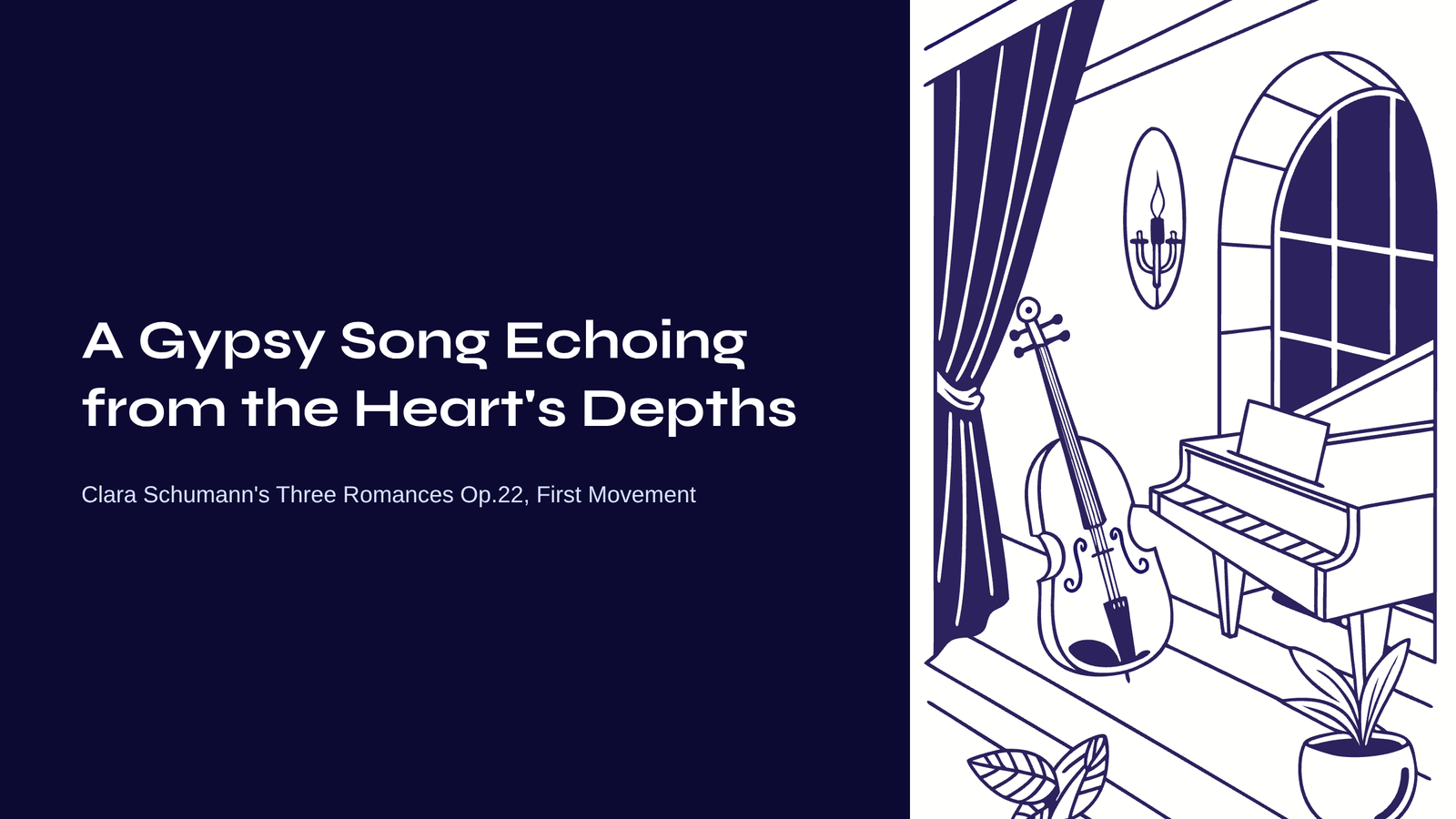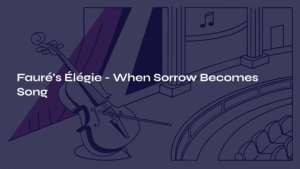Table of Contents
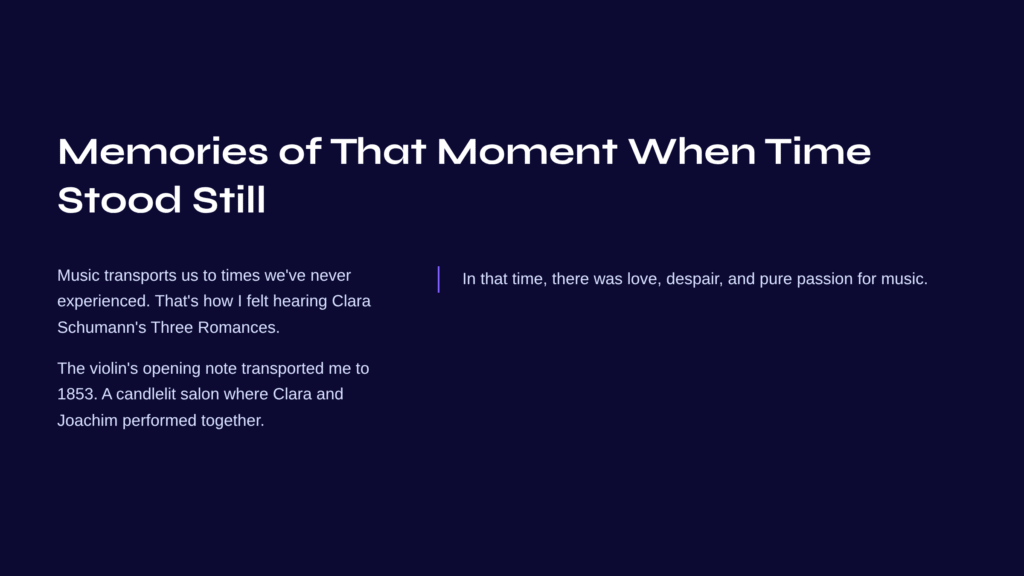
Memories of That Moment When Time Stood Still
As I listen to the melody cascading over piano keys, I find myself wondering. Music is such a curious thing—sometimes it transports us to times we’ve never experienced ourselves. That’s how I felt when I first heard the first movement of Clara Schumann’s Three Romances.
The moment the violin cautiously draws its opening note, I felt as if I were transported to an autumn evening in 1853, in a candlelit salon where Clara and Joachim were performing this very piece together. In that time, there was love, there was despair, and above all, there was pure passion for music.
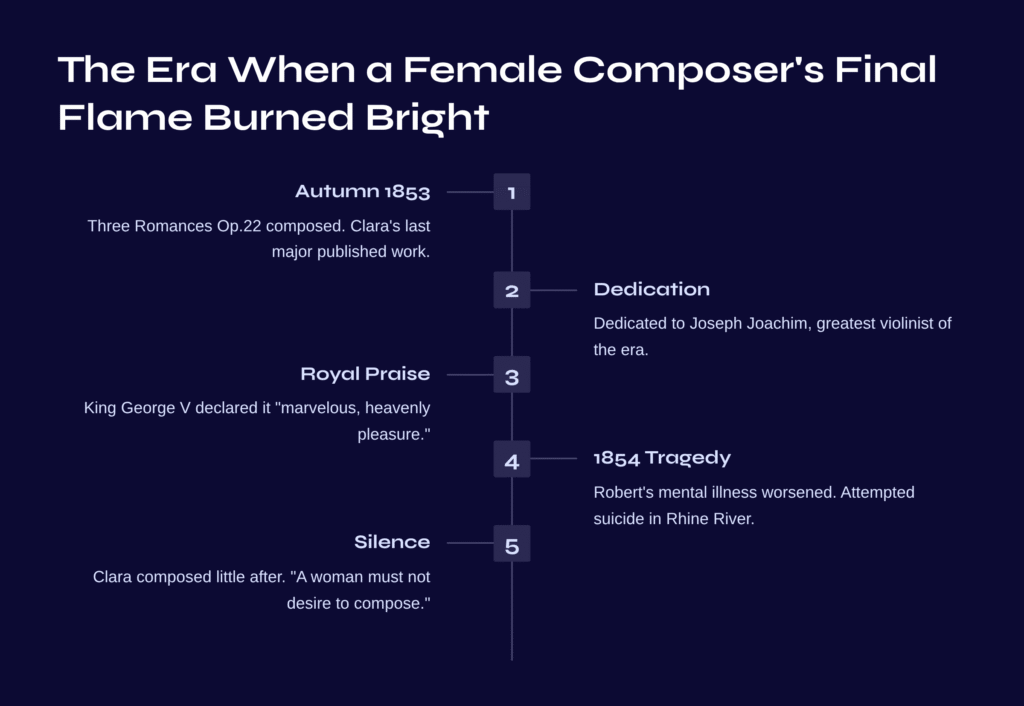
The Era When a Female Composer’s Final Flame Burned Bright
Clara Schumann’s Three Romances Op.22 was born in the autumn of 1853. What makes this work special isn’t simply its beauty. This was the last work Clara published after completing her major compositions. Like a sunset casting its most beautiful light before disappearing, Clara’s compositional life reached its zenith with these romances and quietly drew to a close.
The work was dedicated to Joseph Joachim, the greatest violinist of the era. Joachim and Clara toured together performing these pieces, and their performance reportedly drew such praise that King George V of Hanover declared it “marvelous, heavenly pleasure.”
Yet behind this beautiful music lay deep sorrow. In 1854, Robert Schumann’s mental illness worsened, leading to his attempted suicide in the Rhine River. He spent the next two and a half years in an asylum before passing away. Clara composed very little after that. Her heartbreaking confession—”A woman must not desire to compose”—still pains us today.
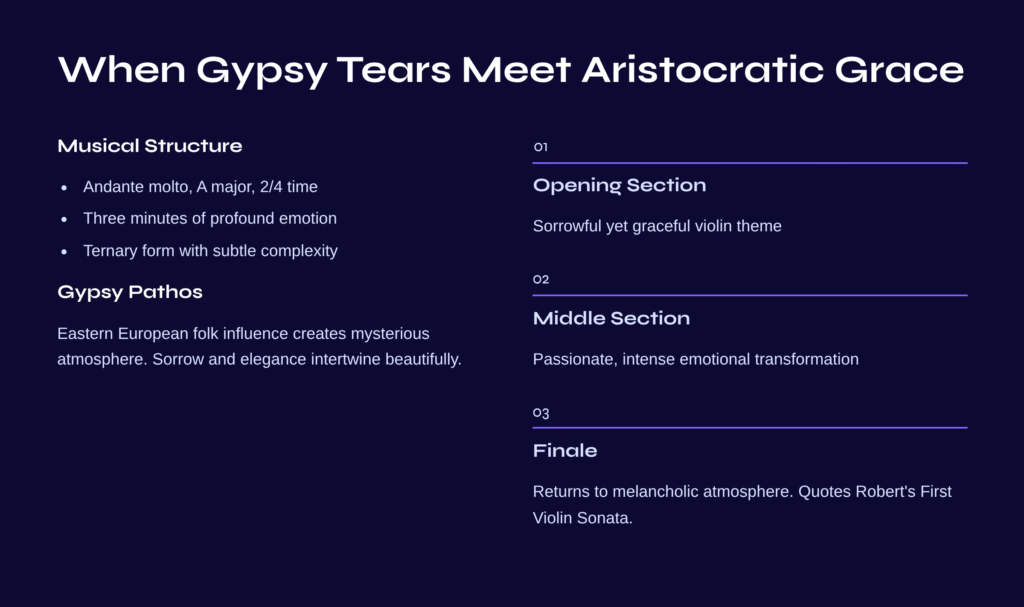
When Gypsy Tears Meet Aristocratic Grace
The first movement, “Andante molto,” is in A major, 2/4 time, lasting about three minutes. Yet the depth of emotion contained within that brief span defies description.
The movement’s most distinctive feature is its “gypsy pathos”—a special atmosphere influenced by Eastern European folk music, where sorrow and elegance mysteriously intertwine. Like an aristocrat’s heart refusing to lose dignity even in despair, this melody carries deep sadness while never becoming unseemly.
The piece follows a typical ternary form. The first section presents a sorrowful yet graceful theme in the violin, the middle section transforms into more passionate and intense emotions, and the finale returns to the initial melancholic atmosphere. Here, a theme from Robert Schumann’s First Violin Sonata is subtly quoted—a deeply personal moment revealing Clara’s affection for her husband and their musical union.
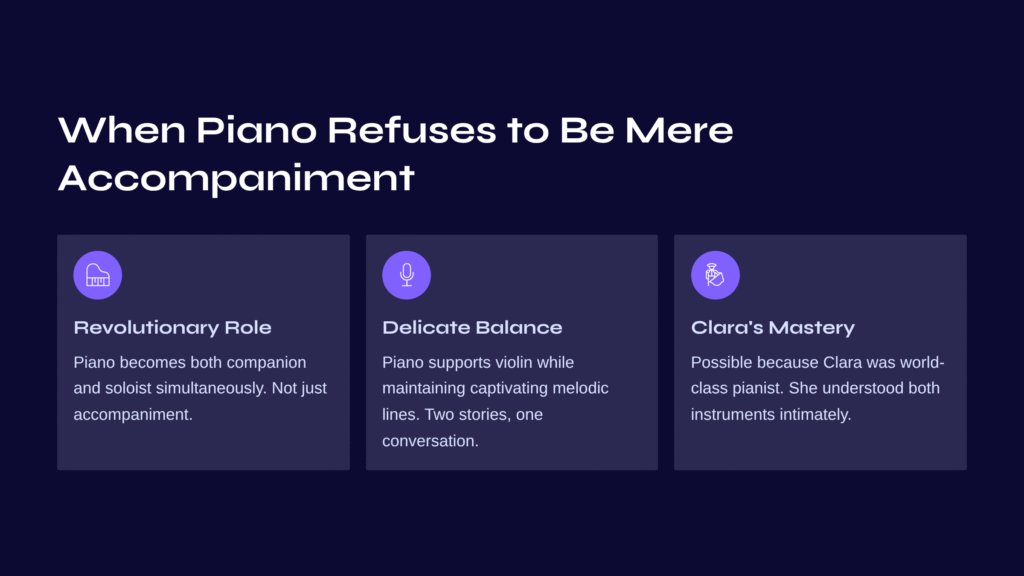
When Piano Refuses to Be Mere Accompaniment
The most revolutionary aspect of this piece is the piano’s role. In typical violin sonatas, the piano tends to remain in an accompanying role, supporting the violin. But Clara made the piano both companion and soloist simultaneously.
The piano supports the violin’s melody while maintaining its own captivating melodic lines. It’s like two people telling different stories while creating one beautiful conversation together. Such delicate balance was possible because Clara was herself a world-class pianist.
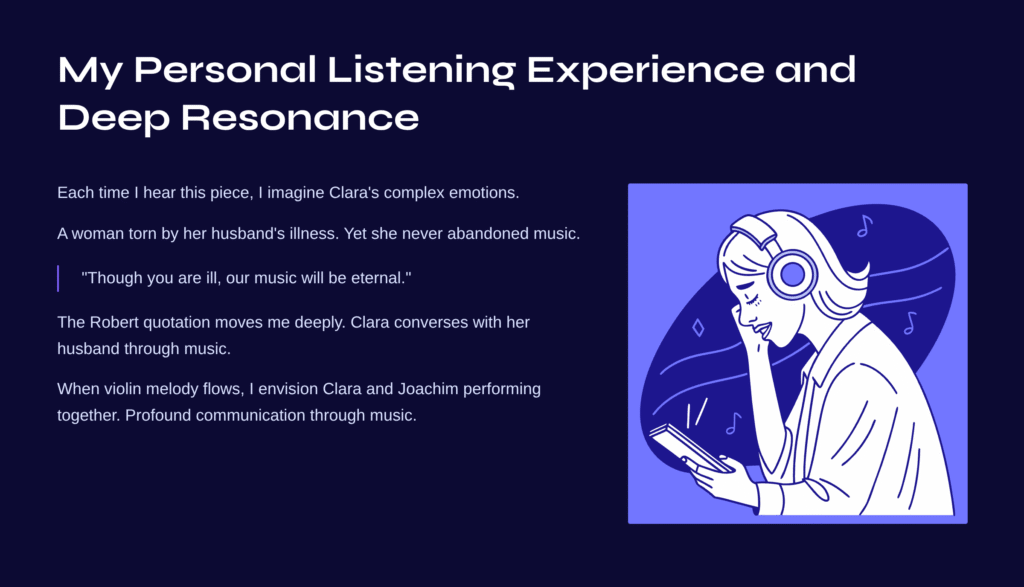
My Personal Listening Experience and Deep Resonance
Each time I hear this piece, I imagine Clara’s complex emotions. A woman whose heart was torn by her husband’s mental illness, yet could never abandon her love for music.
The moment when Robert’s music is quoted in the final section particularly moves me. It’s as if Clara is conversing with her husband through the music, whispering, “Though you are ill, our music will be eternal.”
When the violin melody flows, I often envision those moments when Clara and Joachim performed together. Two musicians matching their breathing to create one beautiful piece of music. It wasn’t merely performance—it was profound communication through music.
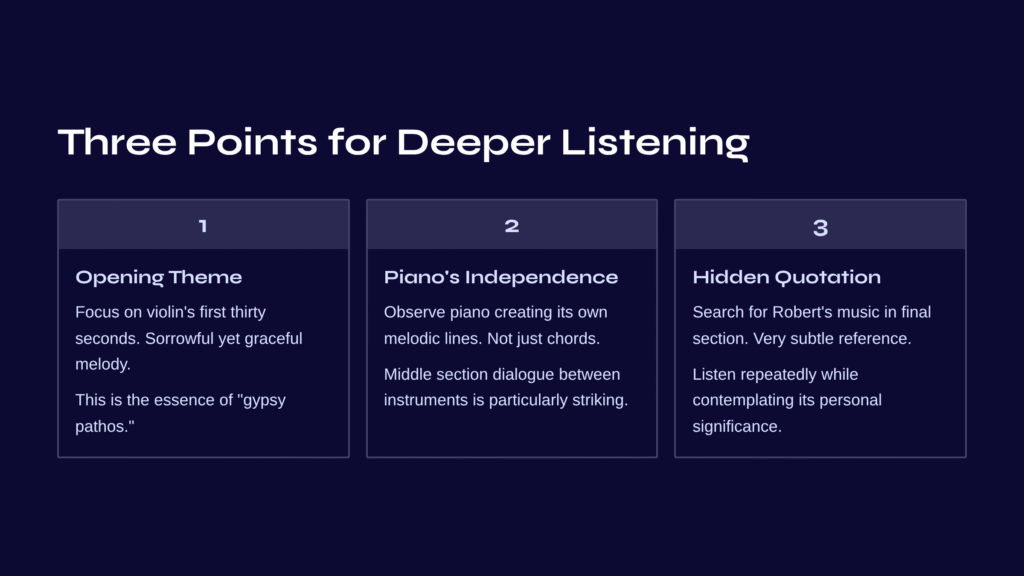
Three Points for Deeper Listening
First, focus on the violin’s opening theme. From the piece’s beginning until about thirty seconds in, don’t miss the violin’s melody—sorrowful yet graceful. This is the essence of “gypsy pathos.”
Second, observe the piano’s independent movement. Rather than simply playing chords, listen to how the piano creates its own melodic lines. The middle section, where piano and violin dialogue conversationally, is particularly striking.
Third, search for the quotation in the final section. The part where Robert Schumann’s music is quoted is very subtle. It may be difficult to notice initially, but listen repeatedly while contemplating its personal significance.
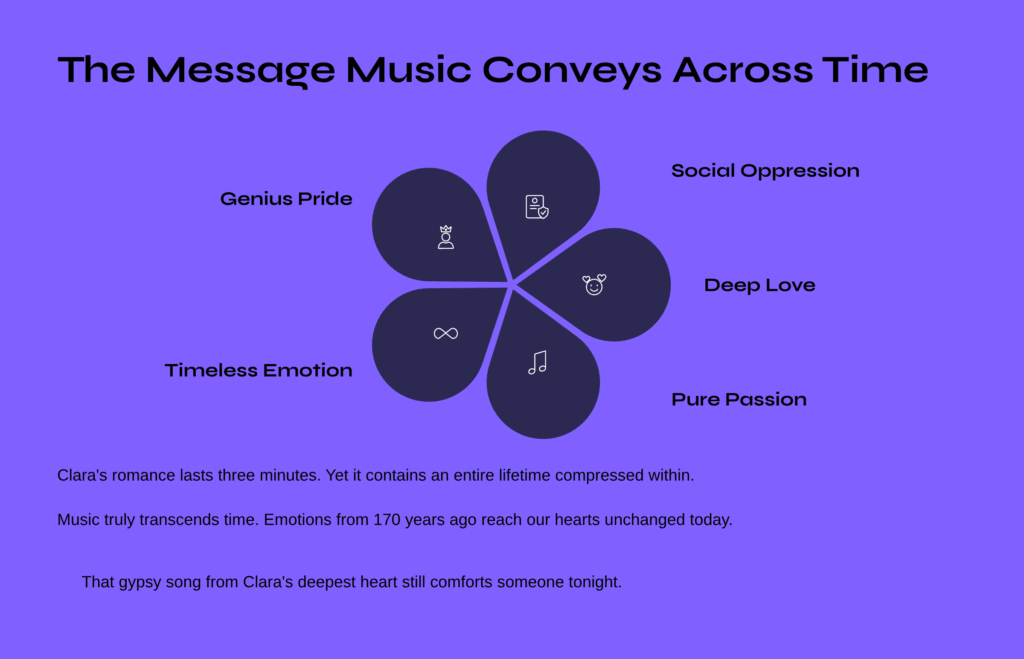
The Message Music Conveys Across Time
Clara Schumann’s romance lasts merely three minutes, yet it contains an entire woman’s lifetime compressed within. The pride of a genius musician, the social oppression she faced for being a woman, her deep love and concern for her husband, and above all, her pure passion for music itself.
Listening to this piece, I think: music truly transcends time. The complex emotions experienced by one woman 170 years ago still reach our hearts unchanged today. That gypsy song emerging from Clara’s deepest heart must still be comforting someone tonight.
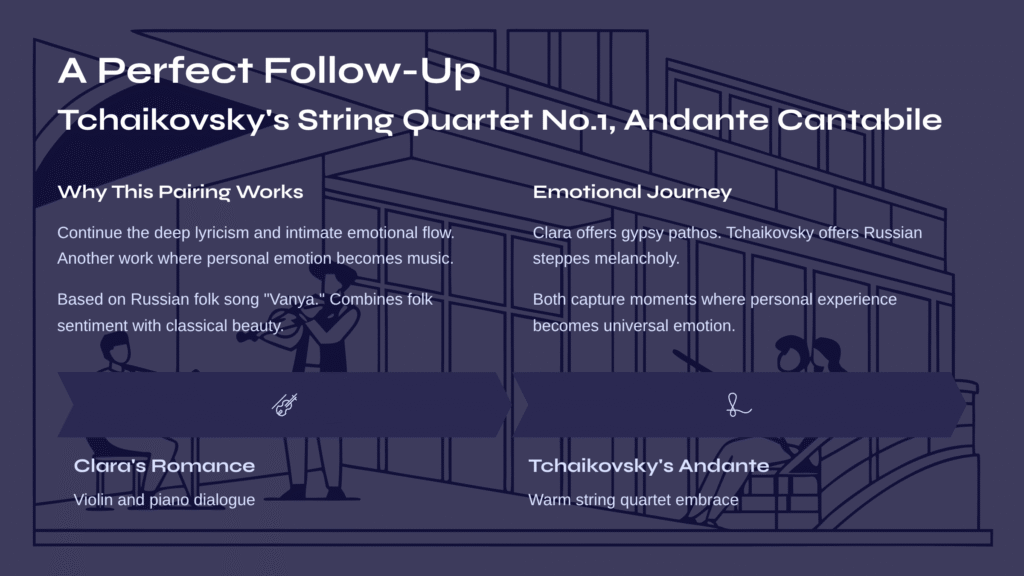
A Perfect Follow-Up: Tchaikovsky’s String Quartet No.1, Andante Cantabile
If you wish to continue the deep lyricism and intimate emotional flow felt in Clara Schumann’s romance, I recommend Tchaikovsky’s String Quartet No.1, Second Movement, Andante Cantabile.
This piece is another representative work where personal emotion is sublimated into music. This movement, based on the Russian folk song “Vanya” that Tchaikovsky heard in childhood, like Clara’s romance, perfectly combines folk music’s sentiment with classical music’s formal beauty.
If Clara’s romance contains the sorrow of gypsy pathos, Tchaikovsky’s Andante Cantabile offers melodies steeped in the melancholy of Russian steppes. Both pieces capture moments where personal experience becomes universal emotion. Listening to them consecutively allows you to feel how lyricism from different cultures resonates within our hearts.
The warm, enveloping sound of the string quartet offers a different charm from Clara’s romance, built on violin and piano dialogue, yet perfectly complements the emotional journey begun with Clara’s intimate musical confession.
